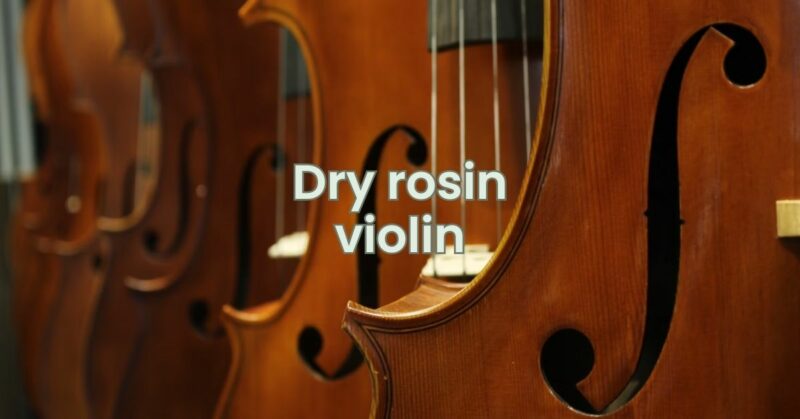Rosin is a vital component in the world of string instruments, as it facilitates the interaction between the bow and the strings, creating the essential friction that produces sound. However, encountering dry rosin on your violin bow hair can lead to challenges in sound production, tone quality, and overall playability. In this article, we will explore the implications of dry rosin on your violin and offer practical solutions to restore optimal performance.
Recognizing the Effects of Dry Rosin
Dry rosin on your violin bow hair can result in a range of issues that impact your playing experience:
- Lack of Grip: When the rosin becomes dry, it loses its tackiness and grip on the strings. This can make it difficult to produce a resonant and sustained tone.
- Scratchy Sound: Dry rosin can cause the bow to slide unevenly over the strings, leading to a scratchy and uneven sound that lacks warmth and depth.
- Inconsistent Tone: The lack of grip due to dry rosin can result in an inconsistent tone across different strings and registers of your violin.
- Bow Noise: Bow noise, characterized by a hissing or whispering sound when drawing the bow, can become more pronounced when using a bow with dry rosin.
Solutions to Address Dry Rosin Issues
1. Check Your Rosin
Begin by examining your rosin to determine if it’s dry and lacking in tackiness. If the surface of the rosin cake appears dull and smooth, it’s a clear sign that the rosin has lost its effectiveness.
2. Clean the Bow Hair
Before applying new rosin, it’s important to remove any traces of the old, dry rosin from the bow hair. Use a soft cloth or your fingers to gently rub the bow hair, loosening and removing the dry rosin particles.
3. Select the Right Rosin
Choosing the appropriate rosin is key to preventing dryness. If you’re experiencing dry rosin issues frequently, consider switching to a higher-quality rosin that offers better consistency and longevity.
4. Apply Rosin Properly
When applying rosin to your bow hair, use even and consistent strokes along the length of the hair. Avoid excessive pressure, which can cause uneven rosin distribution. Applying too much rosin is counterproductive and can lead to other issues.
5. Rotate the Rosin Cake
To prevent a specific section of the rosin cake from wearing out quickly, rotate the cake periodically. This ensures even distribution of rosin on the bow hair and extends the life of the rosin.
6. Store Your Rosin Properly
Proper storage can prevent rosin from drying out prematurely. Keep your rosin in a cool, dry place away from direct sunlight and extreme temperature fluctuations.
7. Regular Maintenance
Clean your strings and bow hair regularly to prevent rosin buildup. This buildup can affect sound production and exacerbate dry rosin issues.
8. Consult Professionals
If you continue to experience dry rosin issues despite your efforts, consider seeking advice from a violin teacher, luthier, or experienced violinist. They can provide personalized guidance based on your instrument and playing style.
In conclusion, dealing with dry rosin on your violin requires a combination of proper rosin application techniques, careful storage practices, and regular maintenance. By recognizing the effects of dry rosin and implementing the solutions mentioned above, you can restore the optimal interaction between your bow and strings, enhancing your violin playing experience and producing a rich, resonant tone.


